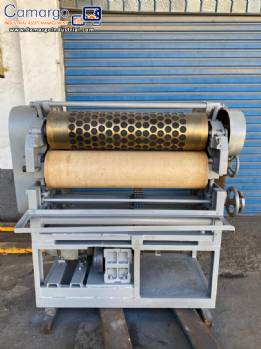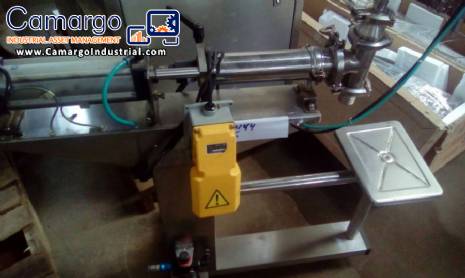An extruder for steaks, sticks, snacks and pet treats is equipment used in the pet food industry, such as dogs and cats. It plays a crucial role in the production of these snackable products. Here is what an extruder for steaks and pet snacks works for and how it works:
What is an extruder for steaks and pet snacks used for:
Pet Snack Production: The main purpose of a steak and pet snack extruder is to manufacture snacks and treats for dogs, cats and other pets. These products are often used as rewards, snacks or food supplements for pets.
Shaping and Texturing: The extruder is used to shape and texturize the treat dough, ensuring it has the desired shape, texture and size to appeal to pets.
Cooking and Stabilization: In addition to shaping, the extruder can also cook snack ingredients during the extrusion process, ensuring food safety and product stabilization.
Production Efficiency: It improves production efficiency by enabling large-scale manufacturing of pet treats with consistency and uniformity.
How an extruder for steaks and pet snacks works:
Ingredient Preparation: The ingredients necessary for the production of snacks, such as flour, protein, grease, flavors and other additives, are mixed and prepared according to the product's specific formula.
Equipment Feeding: The mass of ingredients is fed into the extruder, where it will go through a series of steps.
Compression and Extrusion: Inside the extruder, the dough is subjected to pressure and mechanical force using a helical screw. This causes the dough to be compressed and forced through a die of the desired shape. The die is designed to give the treat the desired final shape, such as sticks, strips, or other pet-attractive shapes.
Cooking: During the extrusion process, dough can be cooked at controlled temperatures to ensure food safety and product stabilization.
Cutting and Cooling: After extrusion, snacks can be cut into individual pieces of the desired size and then cooled to solidify.
Packaging: The finished snacks are packaged according to the brand and industry needs, and are ready to be sold.
Pet treat extruders are designed to be efficient, precise and capable of producing large volumes of treats with consistency and uniformity. They play an important role in the pet food industry, contributing to the production of attractive and safe products for dogs, cats and other pets.
There is a wide variety of snacks for pets on the market, catering to the different preferences and needs of pets. Below are some of the common types of pet snacks:
Steaks and Sticks: These snacks come in a variety of flavors and are often in the form of strips or sticks. They are popular as rewards and snacks for dogs and cats.
Biscuits: Pet biscuits are crunchy and come in many shapes, sizes and flavors. They are often used as daily snacks or for training.
Dental Sticks and Toothbrushes: These snacks are designed to promote pets' oral health by aiding in the removal of plaque and tartar. They tend to be chewy and have flavors that appeal to pets.
Chewable Snacks: These treats are tougher and require chewing, which can be beneficial for your pet's oral health and entertainment.
Steaks and Liquid Snacks: Some brands offer liquid or pasty snacks that can be given directly to the pet or used as a complement to food.
Fruit and Vegetable Snacks: Snacks made from fruits and vegetables are a healthy option for pets, especially for those with special diets or allergies to common ingredients.
Dietary and Functional Treats: Some treats are formulated to meet specific dietary needs, such as treats for weight management, healthy joints, or shiny skin and coat.
Cat Treats: Cat treats are often formulated to meet the specific preferences and needs of felines, such as catnip-based treats or treats designed to improve urinary health.
Snacks for Rodents and Small Animals: Rodents, such as rabbits and hamsters, also have their snack options, which can include seed and fruit bars.
Bird Treats: Bird treats include seed mixes, dried fruits and other foods that are attractive to pet birds.
Treats for Reptiles and Exotic Animals: Exotic animals and reptiles may have specific treats, such as insects, worms, fruits or vegetables, that meet their dietary needs.
Remember, when choosing treats for your pet, it's important to consider your pet's age, size, dietary preferences, and specific needs. Additionally, it is advisable to follow the manufacturer's feeding guidelines and limit the amount of treats to ensure that the animal's overall diet is balanced and healthy. If your pet has specific dietary needs or food allergies, consult a veterinarian for guidance. |







